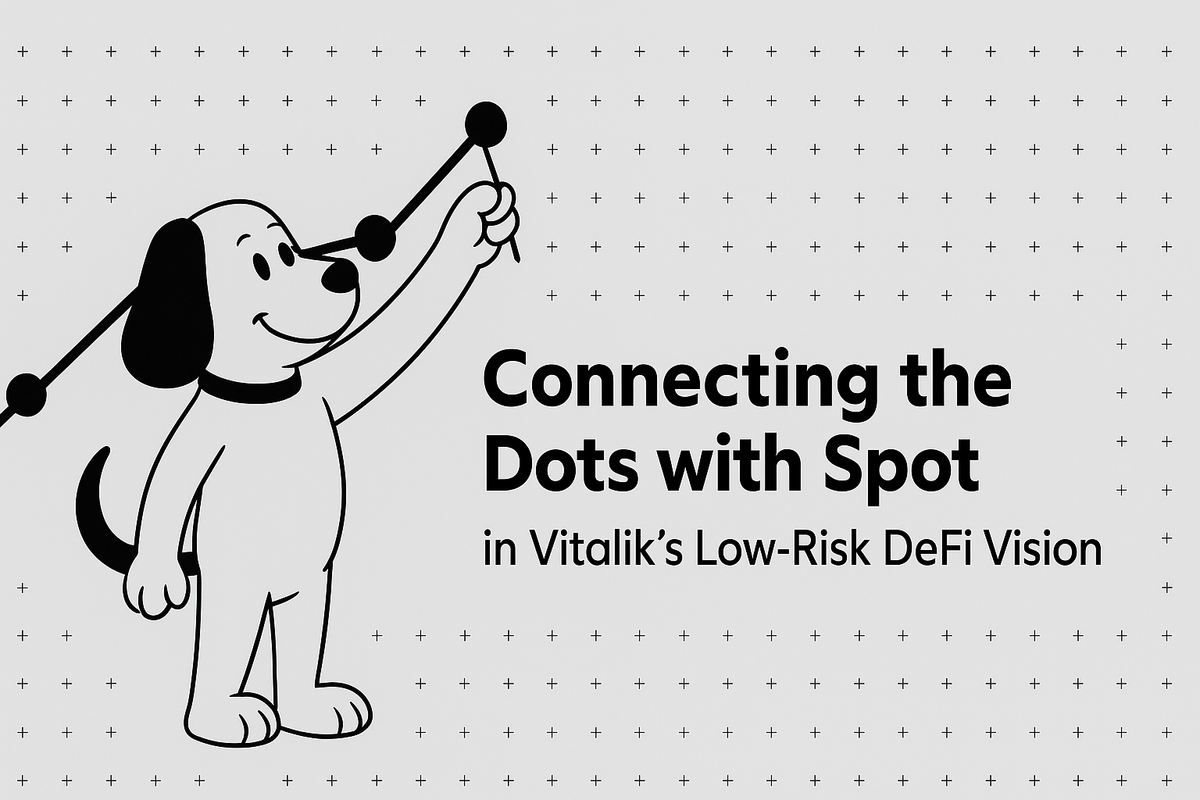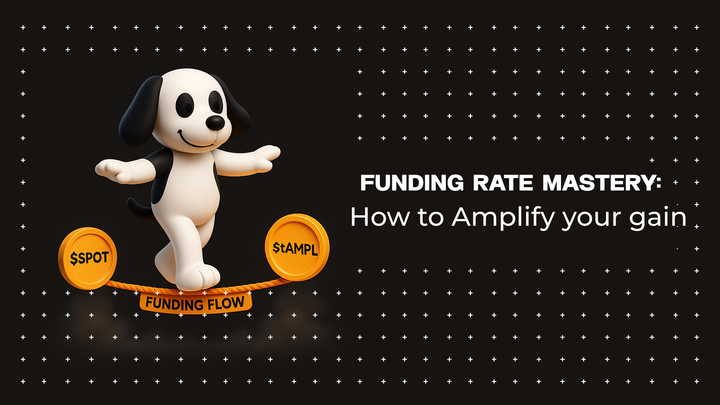Connecting the Dots: How SPOT Embodies Low-Risk DeFi

When most people think of crypto, aside from a funny memecoin, the first things that come to mind are risk and volatility. The crypto market operates 24/7 without as much regulation as traditional markets and allows prices to react instantly to news and speculation globally in real time.
In its early years, crypto was very much an un-regulated wild west, with dramatic price swings driven by hype cycles, fear of missing out, protocol hacks, and rug pulls. In this climate, investors could literally make a fortune and lose the same fortune within a few hours.
Today, crypto is evolving. A lot of lessons have been learned and the industry is maturing. New decentralized finance (DeFi) innovations are paving the way for more stability and growth. Soon, we can imagine a version of crypto that is low-risk, but also capable of generating returns that rival or even exceed those found in traditional finance.
The star of today’s story is Spot, which is a crypto derivative of AMPL that dares to do something most coins can’t, stay calm. It’s built as a low-volatility token designed to maintain upside and durability, whilst also mitigating risk without the wild mood swings we’ve all come to expect from crypto.
In plain English, Spot is like the friend who doesn’t panic when the market starts spinning. This is uncharted territory for a token in crypto, as it is not too volatile or not too stable, hitting a sweet spot (no pun intended) that is low volatile, low risk, and relatively high yield. Spot has also been referred to as a flatcoin, a term that means maintaining consistent purchasing power over time.
To understand why Spot matters, let’s zoom out for a moment and explore the concept of low-risk defi highlighted by an article written by Vitalik Buterin, the renowned founder of Ethereum, aptly titled “Low-risk DeFi Can Be for Ethereum What Search Was for Google.”
Highlighting this passage in particular:

Note how Vitalik made it a point to highlight: "over time we can start moving the ecosystem toward other stable forms of value: basket currencies, "flatcoins" based directly on consumer price indices”. The message is clear: the next evolution of DeFi should create real-world financial stability. Global, permissionless, and ethical by design. A place where users can save, borrow, and earn yield without gambling their future.
Connecting the Dots

Examining Vitalik’s article, lets connect the dots. The article stresses the need for DeFi to move past high risk, incentive driven activity toward real world financial access with flatcoins and basket currencies leading the way. He argues that these designs:
- Reduce risk by tracking consumer price indices/diversified asset baskets instead of just the US dollar.
- Maintain economic stability for users globally, serving as a permissionless alternative to traditional finance.
- Fit ethically with the Ethereum ecosystem, supporting payment and savings with competitive yield without the speculative excess and overall recklessness of earlier DeFi cycles.
Spot as a Flatcoin/LVA in Low-Risk DeFi

Let's talk about LVAs and how this embodies Vitalik's idea of a flatcoin. In addition to Spot being referenced as a flatcoin, it is the world's first Low Volatility Asset (LVA). Think of an LVA as a more descriptive and evolved term for flatcoin. And the ability for any coin to have its own LVA derivative is also on the horizon, with BTC and possibly ETH having their own version of Spot soon.
LVA’s are “low-risk” because their collateral and mechanics are transparent, on-chain, and predictable such that risk can be property accounted for in real time. These are some pretty unique properties, because it means that what you see onchain is trustless, and anyone can easily determine the overall health of Spot by simply viewing its dashboard.
Additionally, an LVA can be considered low risk due to the fact that most of the volatility has been segmented away, making it more durable and crash resistant by design.
By design, Spot is less vulnerable to speculation, crashes, and liquidation risk than dollar-pegged assets backed by collateral. It doesn’t shatter under pressure, it bends but doesn’t break. That makes it an ideal building block for lending, borrowing, collateral, and even long-term savings or retirement portfolios.
Vitalik’s call for basket currencies and flatcoins matches Spot’s model, a blueprint for the low-risk, low-volatility layer that could redefine DeFi’s role in everyday finance and can sustainably generate value and revenue for Ethereum and its users. Precisely what Vitalik envisioned as Ethereum’s long-term “Google Search moment”.




